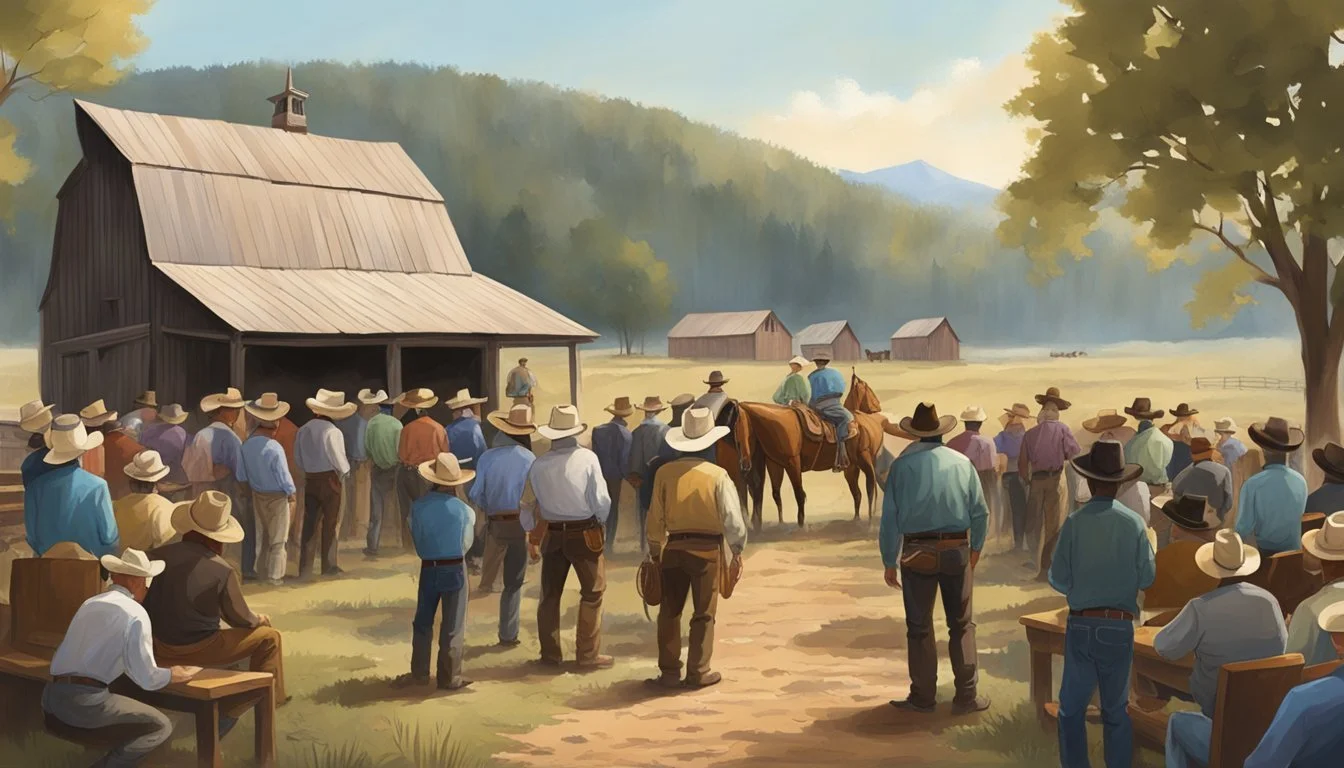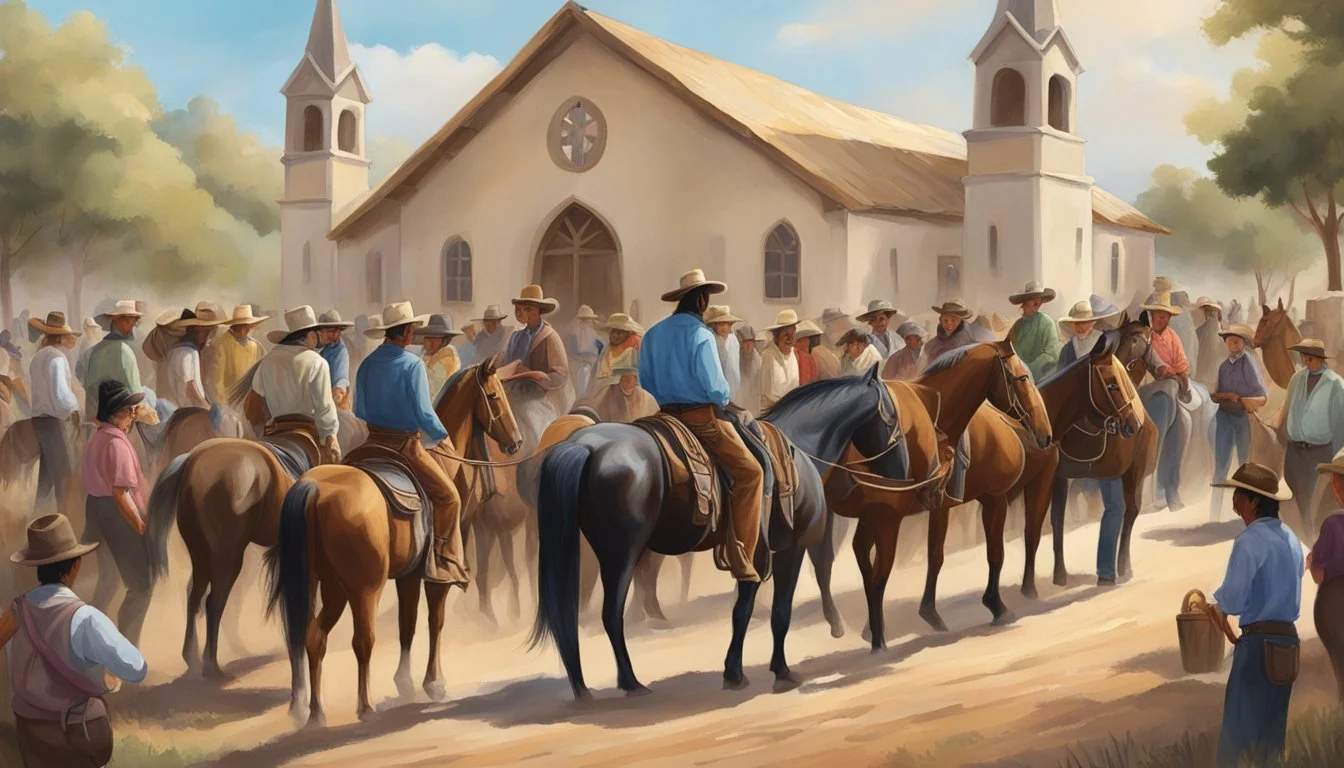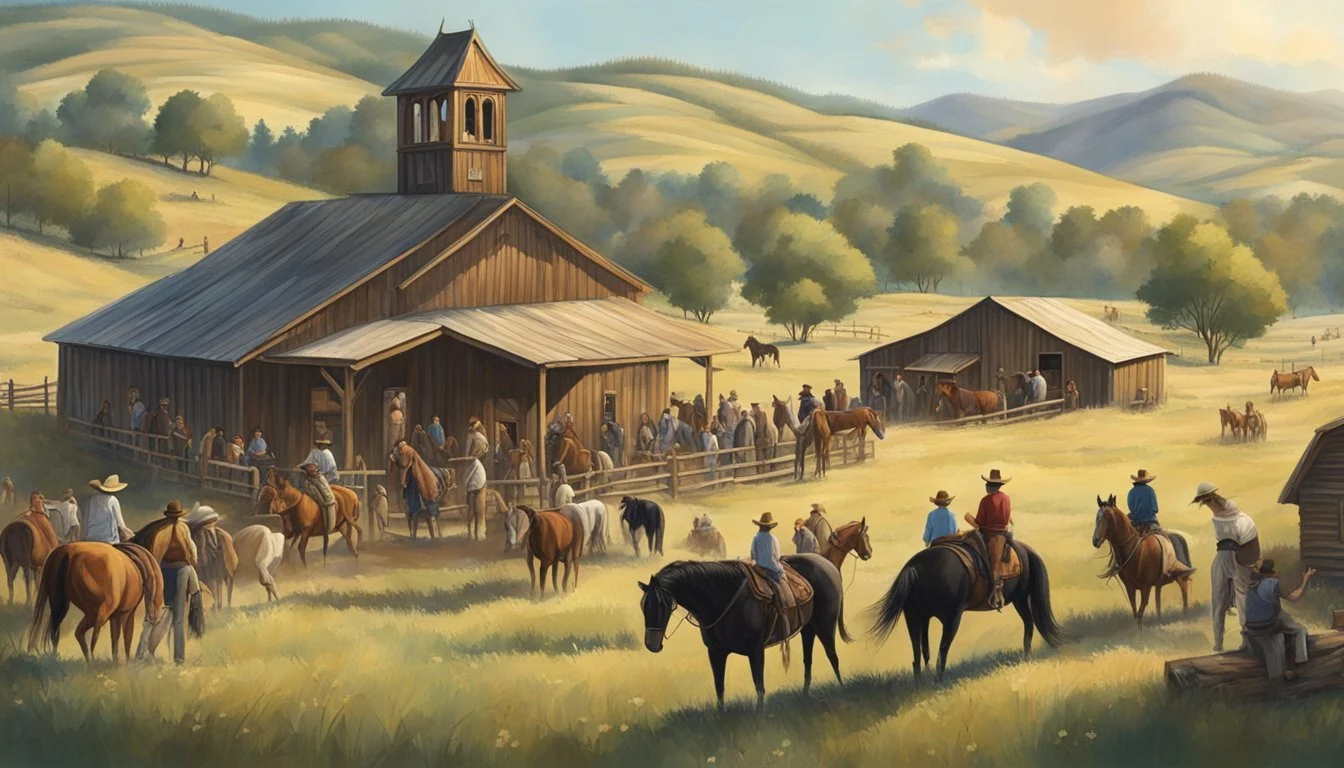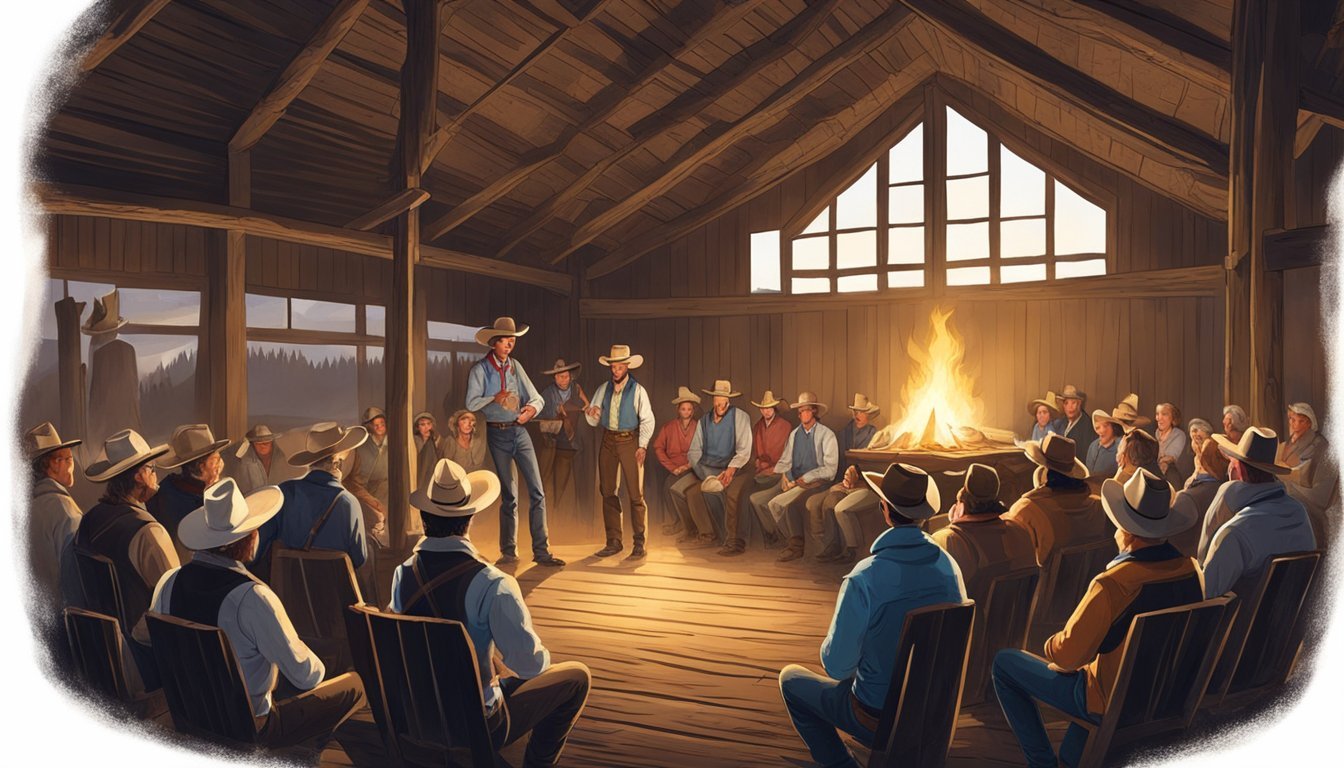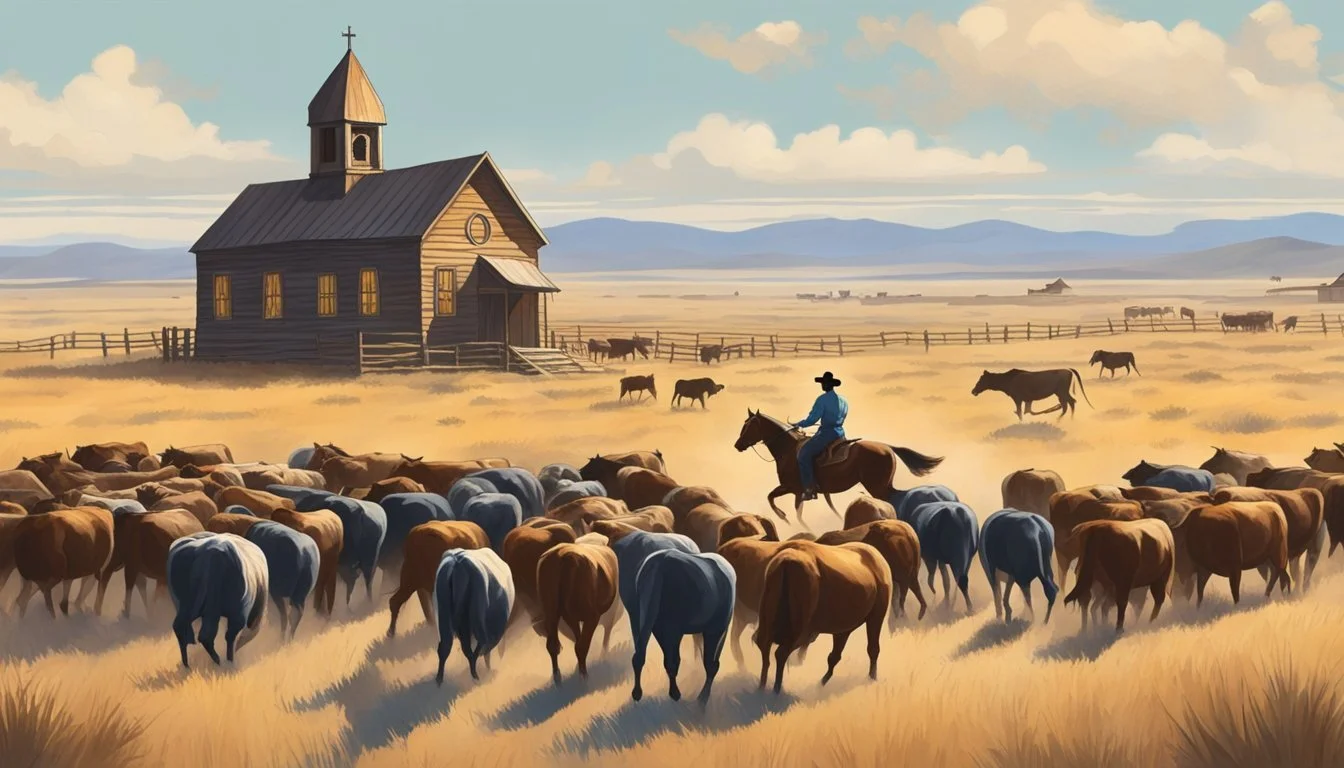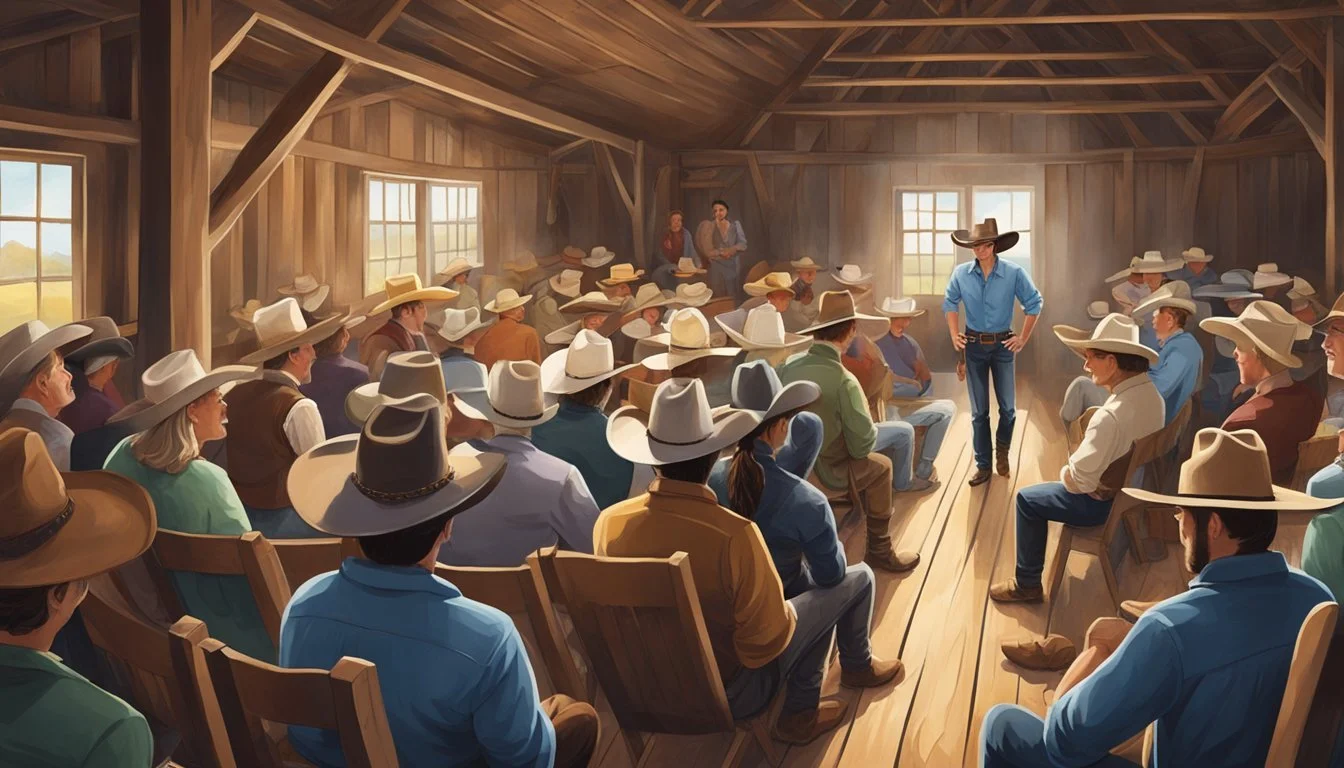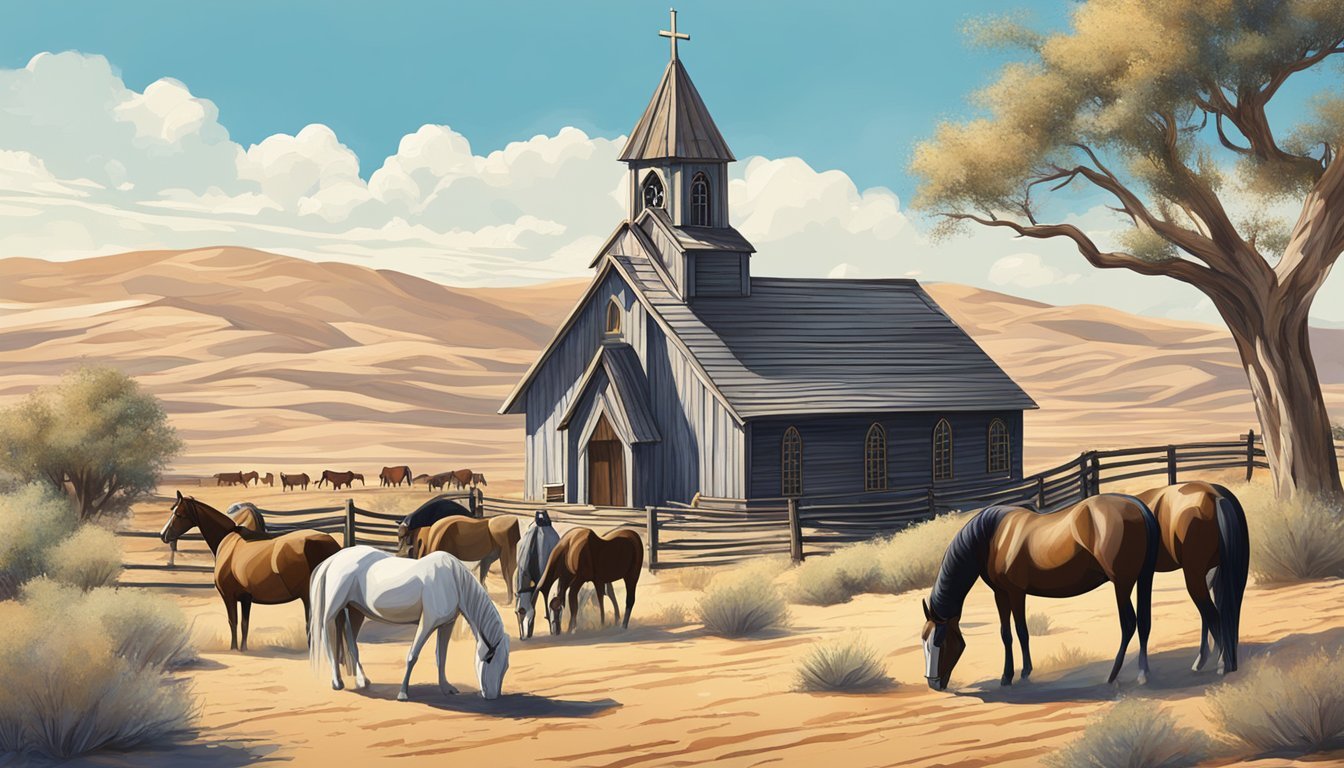The Significance of the Cowboy Church Movement
Understanding its Cultural and Religious Impact
The Cowboy Church movement represents a unique blend of Christian worship with the culture and customs of the American West, predominantly catering to the cowboy and rodeo communities. These churches embrace Western heritage in their character and services, often holding gatherings in rural, non-traditional venues such as barns, arenas, or even sale barns. While the aesthetic is distinct, the theological underpinnings mirror traditional evangelical Protestant beliefs, emphasizing the Trinity and the teachings of Jesus Christ.
These Cowboy Churches strive to create an inclusive atmosphere where individuals can 'come as they are,' without the formalities that might be present in more conventional church settings. This approachability is aimed at breaking down barriers that have historically discouraged some from participating in religious services. The movement is noted for its focus on community, often intertwining religious life with social events and addressing the spiritual needs of individuals who identify with cowboy culture.
As a reflection of its grassroots origin among the American cowboy population, the religious significance of the Cowboy Church Movement lies in its successful integration of faith into the day-to-day life of its adherents. By adapting Christian worship to resonate deeply with the values and lifestyle of its constituency, the movement has made religion more accessible and relevant, contributing to the broader tapestry of contemporary American Christianity.
Historical Context and Genesis of the Movement
The Cowboy Church Movement blends the Christian faith with cowboy culture, originating from historical and sociological streams that have influenced American Christianity. These churches connect time-honored Christian beliefs with the distinctive elements of cowboy heritage, aiming to offer an authentic space of worship for individuals in Western and rodeo circuits.
Postbellum Period and Early Influences
Postbellum Period: The roots of the Cowboy Church Movement can be traced to the period following the Civil War when cowboys spent long periods on cattle trails. During this time, societal shifts allowed for new forms of Christian expression. Religious services were often informal and held in the open where cowboys gathered.
Muscular Christianity: This era saw the emergence of the Muscular Christianity movement, which emphasized piety and physical strength. It resonated with cowboys who valued ruggedness and self-sufficiency, laying the groundwork for the integration of Christian faith into the cowboy ethos.
The Rise of Cowboy Christianity
Cowboy Church Movement: The late 20th century and early 21st century marked the formalization of the Cowboy Church Movement. This period experienced a significant increase in dedicated cowboy ministries and churches.
Jesus Movement Influence: The Cowboy Church often drew inspiration from the broader Jesus Movement of the 1960s and 1970s, which reached out to the disenfranchised by adopting contemporary cultural elements into Christian worship.
Today's Context: Modern cowboy churches often focus on simplicity and accessibility, eschewing traditional religious trappings in favor of a more straightforward approach to worship that resonates with those familiar with the cowboy lifestyle.
Media and Popular Imagery
Influence of Media: Western films and novels have long romanticized the cowboy life, creating an iconic and popular imagery that influences today's Cowboy Church Movement.
They celebrate the cowboy as a symbol of integrity, strength, and American heritage, characteristics that are woven into the fabric of cowboy church communities.
The Movement's Reflection in Media: As cowboy churches have grown in number, they have also captured the attention of media outlets, who have documented the movement's expansion and its blend of Christianity with traditional Western culture.
Theology and Christian Beliefs
Cowboy churches adhere to core Christian doctrines, focusing on a theology that embraces traditional Christian beliefs while often eschewing denominational boundaries. The worship is Biblically-centered, with a strong emphasis on sacraments like baptism and communion, reflecting a blend of influences from various Christian denominations.
Role of the Bible in Worship
Scripture: The Bible plays a central role in cowboy church worship, serving as the ultimate authority on theological and moral issues. Services routinely feature expository preaching where pastors expound on Biblical texts, aiming to apply scriptural truths to the daily lives of their congregants.
Baptism and Communion Practices
Sacraments: Cowboy churches generally observe two primary sacraments—baptism and communion—as outward signs of inward faith and grace. Baptism is practiced as a testimony of faith, often by immersion, following a personal confession of belief in Jesus Christ. Communion is celebrated as a remembrance of Christ's sacrifice, with the elements of bread and wine (or grape juice) representing the body and blood of Jesus.
Denominational Affiliations
Diversity: While many cowboy churches function independently, some do affiliate with larger Christian denominations like the Assemblies of God, the Church of the Nazarene, and the United Methodists. These churches balance their cowboy cultural distinctiveness with the theological leanings and organizational structures of their respective denominations.
Assemblies of God: Often emphasize the workings of the Holy Spirit and practice believer's baptism.
Church of the Nazarene: Focuses on holiness and may involve a public profession of faith through baptism.
United Methodists: Highlight a connectional system and may embrace both infant and believer's baptism, open to all who profess faith.
The theology within these churches maintains core tenets of the wider Christian belief system, adapting practices to fit the cowboy culture while upholding the authority of the Bible and the significance of the sacraments.
Cultural and Societal Integration
The Cowboy Church movement bridges the gap between Western cultural traditions and Christian worship, fostering a unique blend where rodeo and ranching lifestyles meet spiritual conviction.
Incorporation of Western Traditions
Cowboy Churches weave Western traditions tightly into their fabric, creating a cultural hub for individuals deeply connected with the cowboy way of life. Services often feature country music, and prayer or sermons may take place in arenas typically housing rodeos. It's a place where cowboy hats, boots, and denim are more common than Sunday best attire, honoring the dress code of daily ranch life. The material culture, including items like horseshoe crosses, becomes a fusion of faith and Western symbolism.
Rodeo and Bull Riding: Integral components of cowboy culture, events like rodeo and bull riding serve as outreach and fellowship opportunities within these churches.
Gender Equality: While rooted in a traditionally male-dominated culture, the movement strives for inclusivity, with many churches advocating for and actively practicing gender equality.
The Intersection of Secular and Sacred
The Cowboy Church movement demonstrates a conscious blending of secular and sacred elements. Activities such as rodeo events, which might be seen purely as secular entertainment, are embedded with spiritual significance, with chaplains often providing support and ministry to rodeo cowboys and participants.
Sacred Spaces: Churches may double as arenas or community centers, ensuring a seamless transition between secular social gatherings and sacred worship.
Community Dynamics: By celebrating the cowboy identity, these churches reinforce community bonds, serving both spiritual and social functions. Worship often emphasizes practical faith and reliance on God akin to a cowboy's reliance on his horse and tools—a reflection of real-world challenges out on the range.
Organizational Structure of Cowboy Churches
Cowboy Churches often adopt a flexible and decentralized approach to their organizational structure, allowing them to cater to the unique needs of their congregants who are typically part of the cowboy culture.
Role of Independent Cowboy Churches
Independent Cowboy Churches operate autonomously, with each church typically responsible for its own governance and operations. They prioritize a welcoming atmosphere, promoting a "come as you are" ethos that is central to their outreach. These churches are not typically bound by a denominational hierarchy, which allows them to customize their practices and services to better suit their community members, such as holding services in unconventional venues like barns or rodeo arenas. The lack of a formalized structure in independent Cowboy Churches helps to reduce barriers to entry, making the church more accessible and appealing to individuals within the western and cowboy cultures.
Affiliated Cowboy Church Networks
On the other hand, some Cowboy Churches choose to become part of broader networks, such as the American Fellowship of Cowboy Churches (AFCC) or regional networks like the Cowboy Church Network. These affiliations offer a support system and resource sharing among member churches. They often provide doctrinal guidance, organizational resources, and coordinated outreach efforts, which can include rodeo ministries or chaplaincy in horse-racing and bull-riding communities. Affiliated networks sometimes maintain a registry of churches, offer leadership training, and host regional events to foster a sense of community and shared identity.
AFCC: Focuses on church planting and offers support to individual churches in areas such as leadership training and ministry development.
Cowboy Church Network: Often coordinates events and fosters communication among member churches, strengthening the collective mission of outreach and fellowship within the cowboy culture.
Community and Identity
The Cowboy Church movement intertwines religious faith with the cultural elements of the American West to support its community and strengthen its unique identity.
Fostering a Sense of Hope and Community
The Cowboy Church movement offers more than just a place of worship; it serves as a Family Life Center where individuals and families can connect over shared values and experiences. They cultivate an environment where hope is a pillar, offering support and camaraderie among members. Weekly gatherings and rodeo events are common practices within these churches, emphasizing the togetherness that fuels the community's resilience and growth.
Unique Identity of Cowboy Christians
Cowboy Christians carry a distinctive identity that merges traditional Christian doctrine with the culture of the cowboy lifestyle. Their identity is marked by:
Masculine Culture: Emphasis on a rugged, masculine ethos aligns with their interpretation of Christian values and traditional perceptions of cowboys.
Rooted Traditions: Incorporation of cowboy-related symbols and practices, such as horseshoe crosses and western attire, that resonate with their history and way of life.
Community Engagement: Active participation in community events and outreach programs reflects their commitment to both faith and social bonds.
Worship Services and Liturgical Practices
The Cowboy Church movement redefines traditional worship by emphasizing an informal and inclusive atmosphere. Services are tailored to resonate with the cowboy culture and often take place in settings synonymous with the Western lifestyle.
Rodeo and Arena-based Services
Services in Cowboy Churches frequently occur in arenas, embracing the open space where rodeos are also held. This setting allows for a casual atmosphere where attendees often wear everyday ranch attire, reinforcing the notion of "come-as-you-are" worship. These rodeo and arena-based services can involve live country or gospel music that reflects the congregants' cultural ties to the environment of a working ranch or rodeo. The physical layout of an arena, often circular or oval, naturally creates a communal and less formal atmosphere conducive to worship.
Bible-based Teaching and Preaching
At the heart of the Cowboy Church worship service is Bible-based teaching. Sermons are crafted to avoid ecclesiastical jargon, making the message accessible and relatable to daily life and work experienced by the congregation. Preachers focus on delivering straightforward, practical insights derived from the Bible, which align with the movement's goal to break down barriers that have traditionally kept people from engaging with the church and its teachings.
Outreach and Evangelism
The Cowboy Church movement uniquely adapts the principles of Evangelical Protestantism to resonate with cowboy culture, focusing on outreach and evangelism to connect with the unchurched—those who do not regularly attend church.
Traveling Rodeo Ministries and Chaplains
Traveling Rodeo Ministries operate within the rodeo circuit as a form of evangelical outreach, bringing religious services to competitions and events. They serve as a mobile church community, offering fellowship and spiritual guidance. The participants, often competing in isolated areas, receive support and ministry from chaplains who travel with them. These chaplains work to create a bridge between the gospel and the everyday lives of cowboys and cowgirls, knowing that the rodeo lifestyle often keeps them away from traditional church settings.
Engaging the Unchurched
The Cowboy Church movement is proactive in engaging the unchurched, individuals who may have little to no experience with formal religious institutions. Utilizing familiar environments like barns for worship and incorporating country music into services, these churches create a welcoming atmosphere that speaks directly to cowboy culture. By addressing spiritual needs in a culturally relevant context, they effectively communicate the core messages of Evangelical Protestantism to a demographic that might otherwise remain disconnected from religious life.
Impact and Growth
The Cowboy Church movement, rooted in the American West, has demonstrated significant impact and growth through its expansion across the United States and outreach via international influence and mission work. These churches align broadly with basic Christian doctrines and have adopted a new paradigm in church methodology to connect with the cowboy culture.
Expansion within the United States
Within the United States, the Cowboy Church movement has seen substantial expansion, particularly in Texas and neighboring states. Largest Cowboy Church congregations mirror the growth trend, emphasizing a casual worship environment catering to the cultural nuances of the cowboy community. This growth is partly attributable to the network's affiliation with larger denominations such as the Southern Baptist Convention, which provides resources and support while allowing the cowboy churches to retain their unique identity. The informal settings often include arenas or barns, which act as multipurpose venues for worship, rodeo events, and community gatherings.
Texas: Central hub for the movement's growth.
Church Affiliations: Southern Baptist partnership bolstering expansion.
International Influence and Mission Work
The Cowboy Church movement has extended its impact beyond American borders through mission work and the establishment of international congregations. The movement's straightforward, relational approach to Christianity has proven adaptable and appealing in various cultural contexts, allowing for the ethos of the Cowboy Church to resonate across borders. Missionary efforts often focus on sharing this unique blend of Western heritage and Christian faith, establishing a presence in regions with similar rural and equestrian-oriented communities.
International Presence: Mission-driven expansion into similar cultural contexts.
Cultural Resonance: American West ethos serving as a relatable conduit for faith.
The movement's adaptability and distinctive approach continue to draw interest domestically and internationally, highlighting the effectiveness of their new paradigm church methodology within the cowboy culture and beyond.
Innovations in Church Spaces and Symbols
The Cowboy Church movement brings fresh perspectives to worship spaces and religious symbols. Through creative adaptation of rural settings and the reimagining of traditional symbols, these churches resonate deeply with their congregations.
Use of Barns and Sheds in Place of Traditional Churches
Cowboy churches often convene in barns or sheds, restructuring the typical conception of a worship space. These buildings are not mere venues but are chosen with intention; they signify closeness to the rural lifestyle of the congregants. By holding services in such familiar and nontraditional settings, they foster a sense of community and shared identity built around common experiences of rural life.
Locations often include:
Working farms
Ranches
Rodeo arenas
Stained Glass, Saddles, and Religious Symbolism
Traditionally, stained glass windows are hallmarks of church architecture. However, in cowboy churches, one might find these replaced or complemented by items like saddles, ropes, or horseshoes. These items infuse a uniquely cowboy authenticity into spaces and practices, drawing from the mythic aspects of cowboy culture to create a worship environment that reflects their values.
Examples of cowboy-centric religious symbols:
A saddle upon an altar as a representation of a life of service
Horseshoe crosses standing as icons of faith blending with workmanship
Both elements—the adaptation of spaces and the integration of culturally resonant symbols—symbolize the innovative approach cowboy churches have taken to align their religious practices with the cultural identity of their members.
Case Studies and Research
This section examines specific research and case studies concentrating on the cowboy church movement, shedding light on its cultural and social impact through detailed analysis.
Ellis County and Waxahachie
In Ellis County, particularly the city of Waxahachie, the cowboy church movement is not just a religious phenomenon but also a reflection of regional culture. Research conducted here is pivotal as Waxahachie serves as a vital location that echoes the wider practices observed within cowboy churches. Dallas Baptist University has frequently been a source of scholarly attention, with its academics often leading the way in exploring the intersection between religion and local traditions.
Location: Ellis County, Waxahachie
Key Institution: Dallas Baptist University
Focus: Cultural and religious significance of cowboy churches
Findings from Sociological Fieldwork
Sociological fieldwork conducted in cowboy church communities has yielded rich data through interviews and participant observations. These findings underscore the movement's rapid growth and its distinct place within twenty-first-century evangelical Protestantism. The methodologies often involve:
Structured and semi-structured interviews
Longitudinal observations within communities
Such fieldwork captures the lived experiences and organizational structures of cowboy churches, contrasting them with other contemporary religious movements.
Contemporary Challenges and Considerations
The Cowboy Church movement faces the task of preserving its heritage while adapting to the evolving landscape of modern society. Two primary areas of focus are maintaining the delicate balance between tradition and contemporary influences, and anticipating the continued future of these faith communities.
Balancing Tradition and Modern Influences
The Modern Cowboy Church must navigate the complexities of honoring its roots while engaging with modern cultural trends. This includes incorporating contemporary music styles into worship without losing the traditional country and bluegrass hymns that resonate with their congregation. They are also tasked with integrating modern technology to spread their message of love and kingdom values while maintaining the intimacy and simplicity characteristic of the cowboy church experience.
Traditional elements such as:
Country worship hymns
Rodeo and ranching cultural events
Modern influences to consider:
Social media and live streaming services
Modern worship music
Future of the Modern Cowboy Church
Looking ahead, the Modern Cowboy Church confronts several future challenges that could impact its growth and sustainability. These churches must strategize to cultivate new leadership that upholds the church’s core principles while being agile in response to societal changes. Additionally, they must continue to demonstrate a living example of Christ's love within their communities, fostering an environment that is both welcoming to newcomers and deeply supportive for long-standing members.
Future Challenges:
Developing adaptive leadership
Expanding outreach without compromising values
Key Focus Areas:
Upholding Christian doctrine and cowboy heritage
Nurturing a supportive and inclusive church community
Significance in Social and Leisure Environments
The Cowboy Church movement has carved a unique niche within leisure environments, championing a blend of secular pastimes and spiritual life.
Rodeos as Religious Gatherings
Rodeos serve not only as competitive sporting events but also as a platform for religious gatherings. They exemplify the Cowboy Church movement's adaptation to leisure environments, where the fervor of faith meets the dust of the arena. Cowboy Churches actively participate in rodeo events, often providing chaplaincy and hosting faith-based activities. This integration allows the unique expression of Christianity, making rodeos a space for communal worship and spiritual reflection amid the exhilaration of the sport.
Horse Racing and Bull Riding Communities
The involvement of the Cowboy Church extends to other equine and bovine sporting communities, notably horse racing and bull riding. These environments, characterized by their intense energy and high stakes, are where cowboy ministries offer pastoral care and spiritual guidance. The presence of chaplains and ministries at these venues underscores the movement's engagement with cowboy culture and its pursuit to connect faith with the cowboy's way of life. Within bull riding communities, churches organize events and services that cater specifically to the needs and experiences of the riders, embedding spiritual significance into the fabric of the sport.
Conclusion
The Cowboy Church movement embodies a unique intersection of Christian doctrine and cowboy culture. Churches within this movement typically have a non-traditional structure, focusing on simplicity and accessibility. The environment encourages attendees to come as they are, inviting a diverse group of worshippers ranging from rural ranchers to urban residents attracted to the cowboy lifestyle.
Cowboy Churches are often lay-led, relying on the participants to take active roles in both services and church governance. This egalitarian structure promotes a sense of community and individual involvement, perpetuating the church's growth and influence.
In terms of religious life, Cowboy Churches hold to basic Christian tenets, making no compromise on core beliefs. They offer a familiar yet distinct mode of worship, often incorporating country music, which resonates with their congregation’s cultural identity.
Observers from various academic institutions, including Truett Seminary, have studied this phenomenon. Notably, NPR and other media have highlighted the movement’s growing appeal and its implications for religious practice in America.
The Cowboy Church continues to thrive, owing its success to adhering to traditional Christian values while adapting to the cultural requirements of its followers. Its model demonstrates adaptability within religious organizations, signaling potential pathways for faith communities to engage with contemporary culture.
In sum, the Cowboy Church movement is a dynamic force in American religious life, effectively combining tradition with cultural elements to foster a vibrant community of faith.



